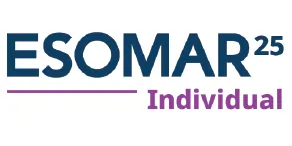
One of the most important things to keep in mind is that one should keep in mind the proper choice of Electronic Health Record System (EHR) in order to foster improvement in patient care, enhance productivity, and improve the efficiency and effectiveness of workflows. Separately from the keeping and securing of data, the health practitioners have recently begun to requesting that EHR systems incorporate a more integrated and multifaceted approach. The global value of EHR systems industry stood at US$ 28.14 billion as at 2022 and it is projected to grow to US$ 35.23 billion by the year 2030, which further emphasizes the need for choosing a system that simultaneously supports the development and requirements of your practice such as These are the functional attributes that your EHR system should have:
Interoperability
An important element is the capability of the EHR system to enable the flow of a patient’s information within the healthcare system. An interoperable EHR enables secure transmission of data between providers, whether during primary, specialty, or inpatient care. This is crucial for coordinated care, reducing the risks of errors, and improving the patient’s health. Make sure that your EHR can integrate with the other systems used by laboratories, pharmacies, and hospitals.
Data Security and Compliance
It is imperative to protect the sensitive information related to patients. Most EHR systems with robust protection against unauthorized access possess features such as encryption, restricted access control, and monitoring. Following rules like HIPAA while practicing ensures there is no breach of privacy. You can be sure your VSHR information will never be leaked due to cunningly designed ‘erasable’ loopholes.
Patient Portals
Most EHR systems today have integrated patient portals through which patients are able to conveniently access his/her medical data, schedule appointments, ask for prescriptions, and Talk to the doctor, nurse, or health admin. This permits patients to exercise greater control over their wellbeing and minimizes the amount of unchanged clerical work that is needed while promoting informed patient involvement.
Ease of Use and Configuration
The healthcare staff should be able to work with clean, easy to use menus, and EHR systems should ensure that each specific medical specialty has its own individual templates and workflows. From primary care physicians to specialty practices, designers need to make processes easier for clinicians to enable proper functioning of the medical system and lessen burnout fatigue from complicated tasks.
Reporting and Analytics
EHR reports can be generated using analytics tools designed for advanced healthcare systems, which can also be used for assessing patient outcomes, efficiency of treatment, and performance metrics. Improved reporting practices enable healthcare providers to make better decisions, improve clinical practice, and enhance the overall delivery of care.
Conclusion
In conclusion, while choosing an EHR system, interoperability, security, patient portals, usability, and reporting must be prioritized. An EHR that has been well selected will improve the practice, patient care, and the overall success of the practice. Look out for these key features so that your organization will remember the right choices to support its goals.






